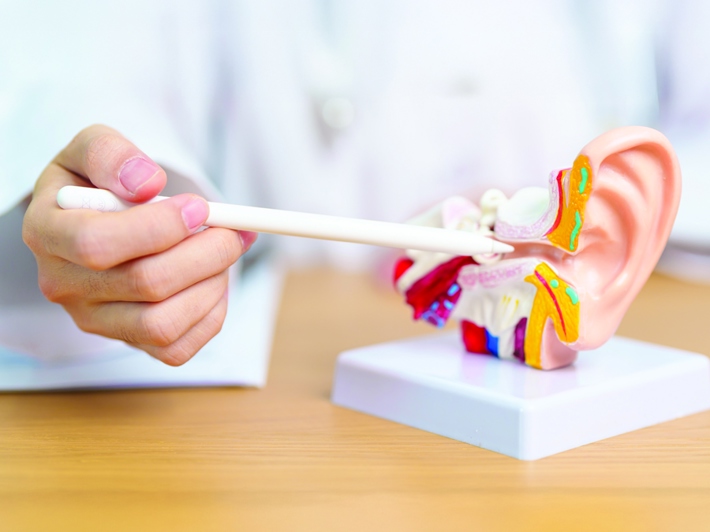Do you feel fullness or pressure in your ear, as if there is water stuck inside? This may be due to the accumulation of fluid behind the eardrum, which is medically known as “otitis media with effusion”. The accumulation of this fluid can impair hearing and cause some discomfort. But don't worry, this condition is usually treatable!
This condition is common in children, especially those between the ages of 6 months and 3 years, and follows an ear infection that has not completely healed, or due to a cold, sore throat, or some irritants. What are its symptoms? How can it be treated? (1)
Symptoms of Tympanic effusion
Symptoms vary from one person to another, and usually asymptomatic, and the infected person doesn’t appear sick. If symptoms appear, they occur in one or both ears, and generally include: (2)
- Feeling full and pressure in the ear.
- Hearing loss (not permanent).
- Balance problems (in some cases).
- Otalgia (but not always).
- Thin, watery, or thick sticky fluid coming out of the ear (In case of the eardrum rupture).
See a doctor if you or your child suffer from the above symptoms, especially if they are severe or persistent and do not improve with time. These symptoms may resemble other medical conditions or problems, and it is necessary to obtain an accurate diagnosis to develop an appropriate treatment plan. (5)
Treatment of Tympanic effusion
Treatment for tympanic effusion depends on the cause and severity of the condition. Here are some common methods of treatment:
1-Wait and observe:
Water behind the eardrum often resolves on its own without treatment within 4-6 weeks. In the meantime, there are some things that can help relieve symptoms, such as: (3)
- Avoid allergens such as dust.
- Keep the ear dry, and avoid swimming or showering.
- Avoid smoking and passive smoking.
- Commitment to breastfeeding the child.
2-Medications:
- Analgesics.
- Decongestants (not recommended for children under 6 years).
- Steroid nasal sprays (may be helpful for some people).
- Antibiotics. If the fluid buildup is caused by a bacterial infection, your doctor may prescribe antibiotics.
3- Drainage of ear fluids
If fluid accumulation continues for a long time, your doctor may recommend ear fluid drainage, through a simple surgical procedure in which a small incision is made in the eardrum to allow the fluid to drain, and then small tubes are inserted to keep the eardrum open and prevent future fluid accumulation. The tubes usually fall out on their own within six to 12 months.
Sometimes, the doctor may recommend removing the adenoids, in order to restore better hearing. (4)
Book your appointment today in the ENT department at Al-Ahli Hospital, and get the care you deserve, with an elite group of the most skilled doctors and specialists.
References
1.What Is Otitis Media With Effusion?, WebMD
2.Otitis Media (with Effusion), American Academy of Family Physicians
3.Otitis media with effusion, MedlinePlus Medical Encyclopedia
4.Glue Ear (Otitis Media with Effusion): Symptoms & Causes, ClevelandClinic






